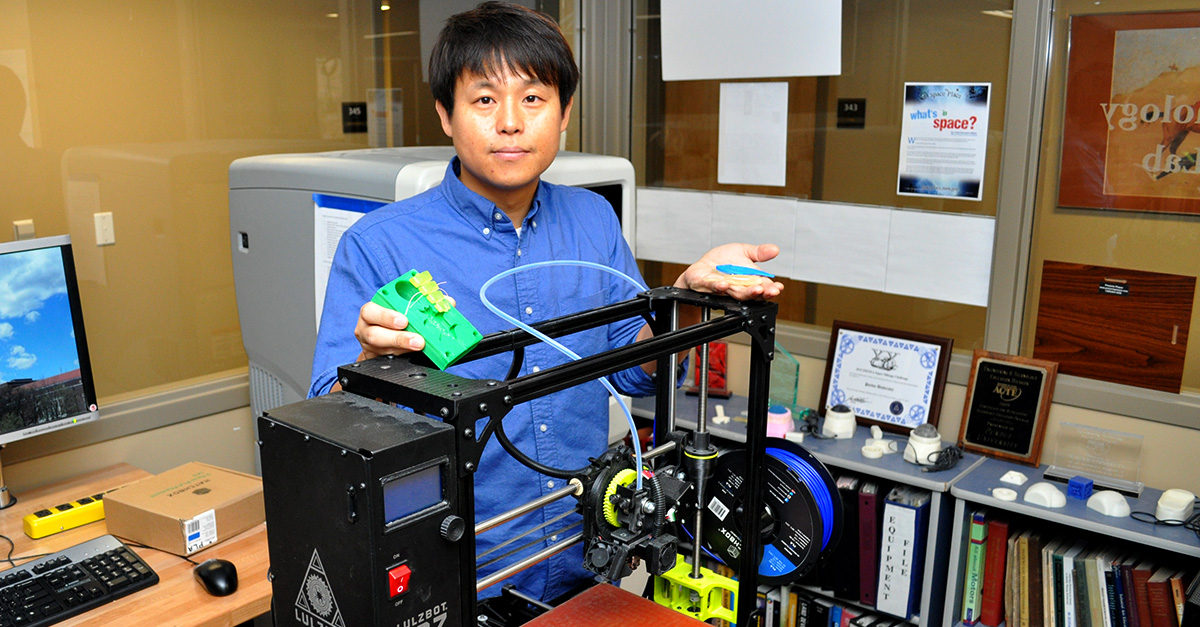
To better understand how students think through a project, Euisuk Sung wants to map their thought process while learning in a design thinking environment.
Sung, a PhD student, has been working with Todd Kelley, professor of engineering/technology teacher education, to implement a design thinking workshop for high school science and technology teachers. As the teachers apply in their own classrooms what they learn in TRAILS, Sung is collecting data about how their students respond to the lessons.
“I use think-aloud protocol. It’s a research measure that captures the student’s mind activity as they work,” Sung said. “My idea is that the design thinking process is not linear, it is iterative.”
The design thinking process includes steps to take students from identifying a problem through research, testing, improvement and a final prototype. Sung’s research has shown that students, while they understand the steps, mentally go back and forth among the steps as they process what they are doing.
Using his bachelor’s degree in computer science, Sung developed software to analyze the thought patterns he collects. He hopes to find an overall pattern that will help him and other educators predict how students will work within the defined design thinking steps. In other words, he says, he wants to map the thinking pathway created by human nature.
“This is a fundamental study about the nature of design and nature of humans. I’m studying behavior by studying statistical pattern,” Sung says.
Before coming to Purdue, Sung taught in South Korea for nine years. His interest in STEM subjects and engineering education led him to Purdue Polytechnic’s graduate program in engineering/technology teacher education. He has helped Kelley create specific lessons for his TRAILS program, including the D-BAIT lesson that helps illustrate concepts in buoyancy, entomology and biomimicry.
His preliminary findings show students from the high school technology classes engaged in the D-BAIT lesson benefit greatly from that type of project-based lesson. The students also gain a greater appreciation for the types of majors they can pursue in college.
Sung will travel to Dallas in March for the annual ITEEA Conference, where he also will receive an Outstanding Graduate Student award. He will present his recent research outcome, titled “How young children solve design problems,” which shows iterative design thinking pathways of young students based on a sequential pattern analysis. He previously presented the study at the London International Conference on Education.
When Sung graduates in May 2018, he hopes to remain in academia and continue his research in design education for engineering and technology.
